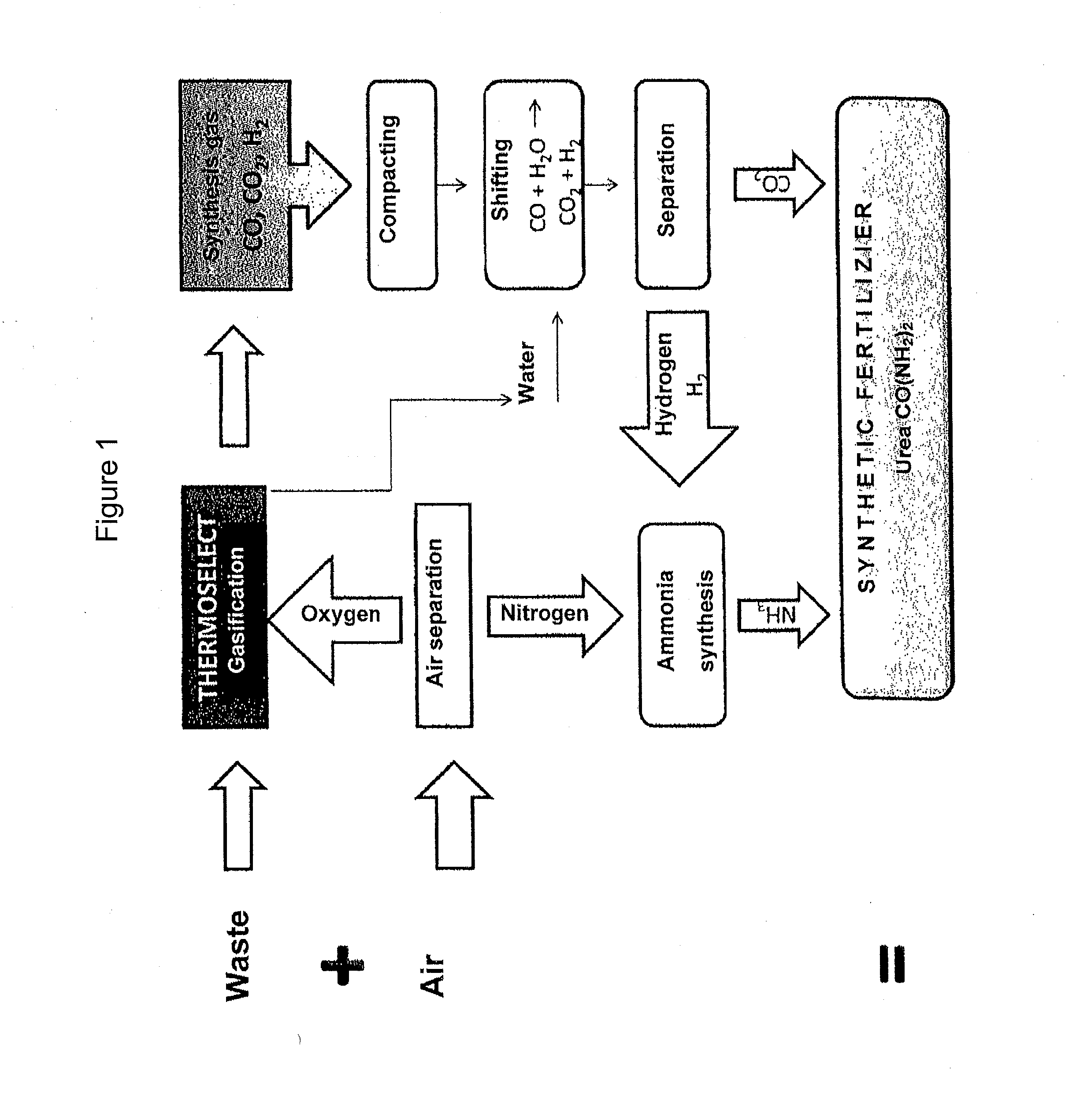Method of manufacturing urea from refuse, preferably domestic waste, of any composition
a technology of urea and domestic waste, which is applied in the direction of gasification process details, inorganic chemistry, combustible gas production, etc., can solve the problem of feeding the world's population, which is an ever increasing problem
- Summary
- Abstract
- Description
- Claims
- Application Information
AI Technical Summary
Benefits of technology
Problems solved by technology
Method used
Image
Examples
Embodiment Construction
[0025]In this process, the waste of any desired composition is gasified in a high-temperature reactor with O2 at a temperature of at least 1000° C. to 2000° C., preferably at around 1500° C. for forming the synthesis gas. The indwell time of the synthesis gas in the reactor amounts to 1.0 seconds to 5.0 seconds, preferably around 2.0 seconds. To prevent any reformation of the synthesis gas components into toxic products, the synthesis gas is subjected to a shock cooling (quenching).
[0026]In the next step, the synthesis gas which is formed by the above-described high-temperature treatment is first preferably compressed to 10 to 80 bar, preferentially to around 50 bar.
[0027]To utilize the synthesis gas as efficiently as possible for the obtaining of nitrogen-rich synthetic fertilizer, the hydrogen portion in the synthesis gas should be as high as possible. The reaction is carried out in accordance with the formula CO+H2O=CO2+H2 with the aid of the so-called shift reaction correspondin...
PUM
| Property | Measurement | Unit |
|---|---|---|
| temperature | aaaaa | aaaaa |
| temperature | aaaaa | aaaaa |
| temperature | aaaaa | aaaaa |
Abstract
Description
Claims
Application Information
 Login to View More
Login to View More - R&D
- Intellectual Property
- Life Sciences
- Materials
- Tech Scout
- Unparalleled Data Quality
- Higher Quality Content
- 60% Fewer Hallucinations
Browse by: Latest US Patents, China's latest patents, Technical Efficacy Thesaurus, Application Domain, Technology Topic, Popular Technical Reports.
© 2025 PatSnap. All rights reserved.Legal|Privacy policy|Modern Slavery Act Transparency Statement|Sitemap|About US| Contact US: help@patsnap.com


